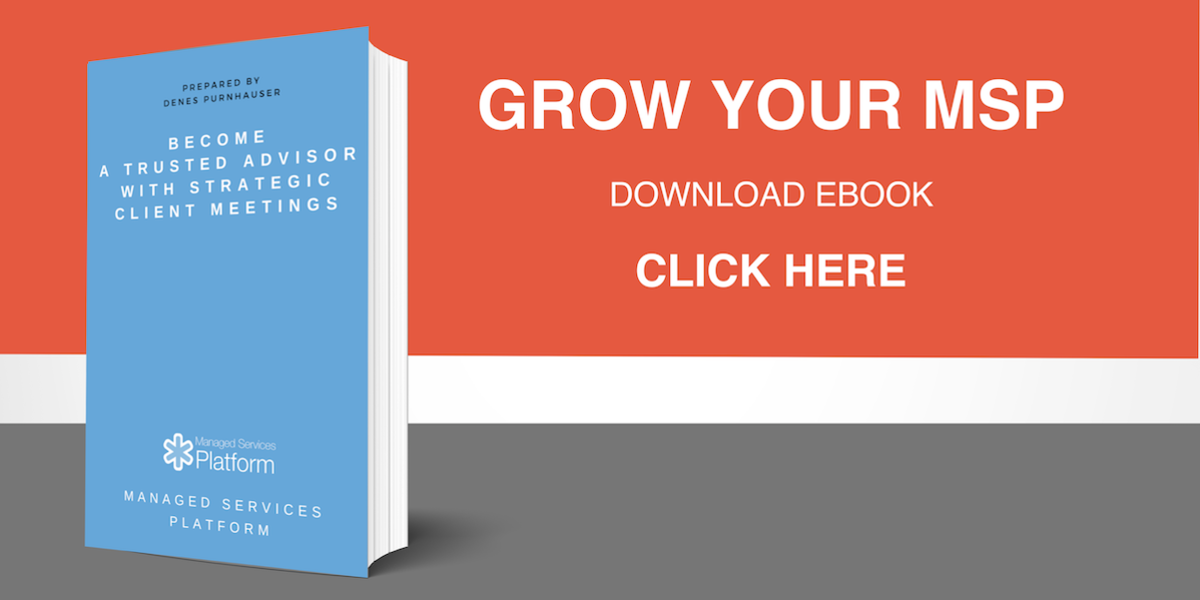
Transforming your Basic IT Service Provider company into a high-value business partner is a study in communication - why you communicate, what you communicate and who is communicating to whom. There are four roles that are critical to your relationship with your clients. The communication from these four critical roles will determine whether your company is becoming a commodity or a differentiated brand. Let’s take a look at these roles and what you can do to make sure their communication will be excellent.
Client Engagement Roles
Client Engagement Roles are responsible for interaction and involvement with your clients in various distinct business activities, and are defined by their area of focus. As very few MSPs have yet to clearly delineate those roles, a lack of clarity creates unnecessary noise within the process of client engagement.
Your client engagement roles should be separated by the nature of the activities (Business or Technology Related) and by the focus of the activities (Tactical or Strategic).
We have four different roles segmented by nature and focus of activities. Account Managers and Technical Account Manager roles are responsible for the tactical focus and Business vCIOs and Technical vCIOs are responsible for the Strategic focus.
The reasons for doing this:
- the client audience will be distinct (CEO / CFO / Office Manager / IT Coordinator)
- the required skills of the various activities will be distinct (Sales, Planning, Strategy, Technical)
- the engagement cycles will be variable (Strategic - Annual and Tactical - Quarterly)
Without proper separation of the roles, client engagement will be inefficient and your communication will be confusing.
Examples:
- the owner of the client entity has to sit in a meeting discussing tickets and backup issues quarterly
- the account manager is asking approval for a project from an office manager
- clients are not interested in participating in business review meetings
- clients are not engaged with business conversations discussing only technical issues
Client Engagement Responsibilities
Each role has a responsibility to engage the client with particular activities. The Strategic roles engage clients typically annually with executive roles. The tactical roles do so with the office manager or another technical coordinator level.

Typical responsibilities for the Strategic-Business (vCIO) role: Make sure IT is viewed as a strategic business asset, not a cost
- IT Strategy Development
- Business Application Selection
- Data and Business Intelligence
- Office Productivity
- System Integrations
Typical responsibilities for the Strategic-Technical (Technical vCIO) role: Make sure that the IT Infrastructure is aligned with their business goals
- IT Infrastructure Roadmap Plan
- IT Infrastructure Budget Plan
- Technology Stack Adoption
- IT Infrastructure Risk Assessment
- Hardware Lifecycle Management
Typical responsibilities for the Tactical-Business (Account Manager) role: Make sure that the companies are aligned, engaged and are expanding their business with you.
General Client Engagement
- IT Infrastructure Roadmap/Budget Reviews
- Service Satisfaction
- Service Expansion/Renewal
- New Service Sales
Typical responsibilities for the Tactical-Technical (Technical Account Manager) role: Make sure that the service is delivered well and the day-to-day operation is efficient
- Best Practice Adoption
- Service Delivery Alignment
- Ticket, Service Process Reviews
- Security / Backup / DRP Reviews
- Lunch and Learn
The Business-vCIO role’s scope is usually outside of the MSP’s IT infrastructure offering. That means the goal of this engagement role is to expand the services with the client. The engagements should lead to extra sales.
The rest of the role’s scope is inside the MSP offering and helps engage with the IT Infrastructure core services.
Client Engagement People
You might be an entrepreneur doing client engagement on your own. Maybe you’re an owner trying to delegate some of the client engagement activities to an employee. Even if you’re leading or participating in teams dedicated to client engagement, the likelihood that the roles and their audiences efficiently matching is pretty low.
Most organizations have overlapping titles for many roles. The trick is how to map different people to distinct roles. Be aware you might have to redefine your current structure to achieve this streamlining of your processes.
Best Practices:
- If you are an owner delegating the roles, let's keep the strategic role and delegate the tactical elements to an employee. This way you can keep the high-level owner-to-owner type discussions with clients.
- If you are in a team, the sales team can take over the Account Management roles for more business development pursuits, the primary technical resource can take the Technical Account Management roles and a more senior individual can step up as a Technical vCIO. The Business vCIO can be done by the owner or a full-time consultant type resource.
Conclusion:
By clarifying roles you may find it much easier to
- hire the right people to the AM, vCIO positions
- engage clients with QBRs
- provide clients with strategic roadmaps
- get clients to adopt your best practices or solution stack



